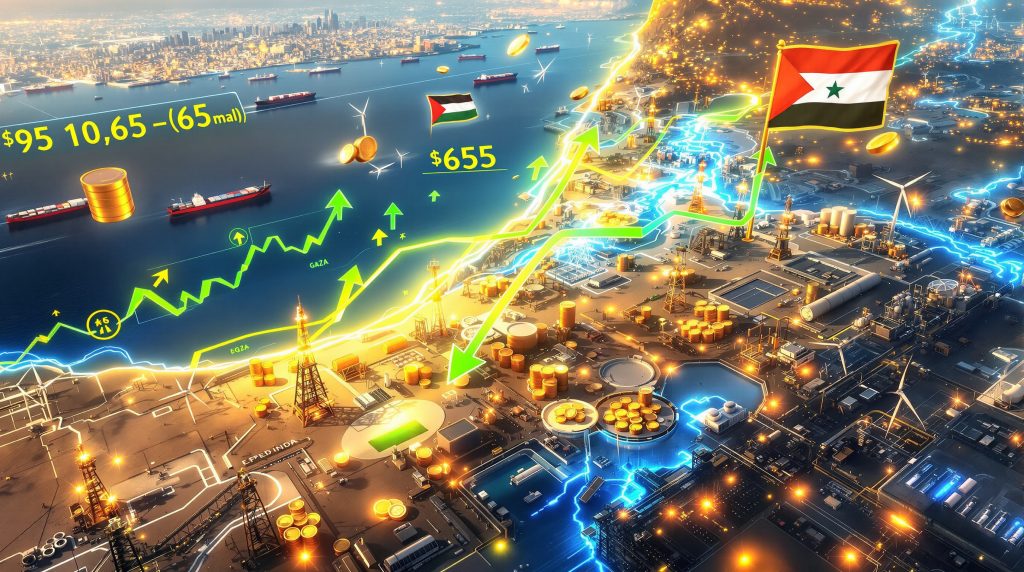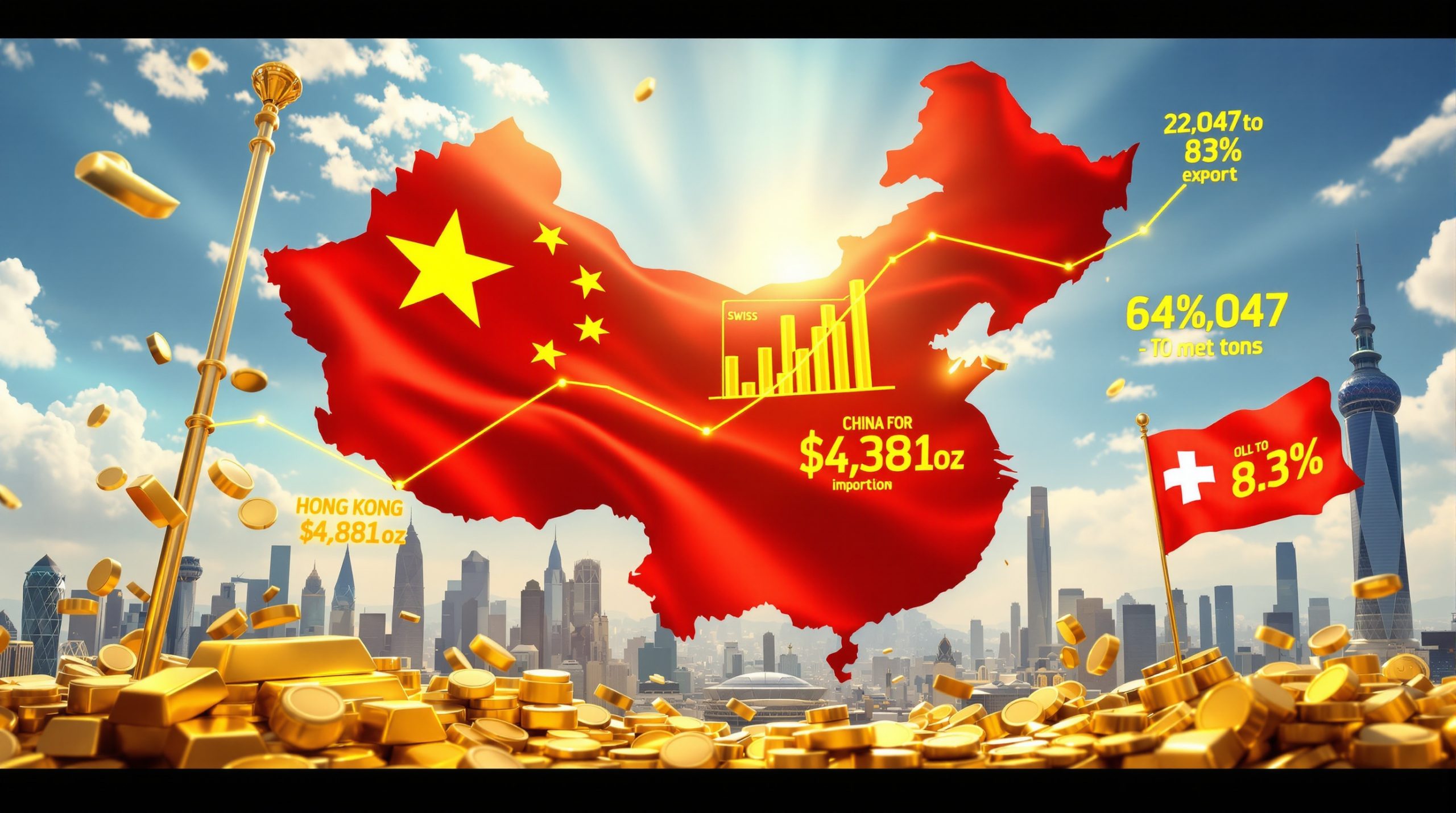Understanding the Current Middle East Peace Framework
Recent diplomatic developments in the Middle East have created unprecedented shifts in regional dynamics, extending implications far beyond immediate conflict zones. The establishment of peace in the Middle East through structured ceasefire agreements represents a significant transformation in geopolitical risk assessment and energy market fundamentals. Furthermore, these changes are creating ripple effects throughout global oil market dynamics and affecting international investment strategies.
Key Components of Peace Implementation
Modern peace frameworks typically incorporate multiple phases designed to build sustainable stability. These arrangements generally include:
- Phased prisoner and hostage exchanges following established international protocols
- Structured withdrawal timelines with specific territorial provisions
- International oversight mechanisms for reconstruction coordination
- Security guarantees from multiple global powers to ensure compliance
Historical analysis shows that successful Middle East peace agreements require implementation periods ranging from 18-36 months, based on data from the United States Institute of Peace. The Trump administration's peace efforts continue to shape contemporary diplomatic frameworks, building on the precedents established by the 1978 Camp David Accords.
Regional Power Dynamics Transformation
Peace processes reveal fundamental shifts in regional influence patterns, often testing traditional alliances while enabling new partnership structures. These reconfigurations directly impact energy supply chains, trade route security, and investment capital flows across critical Middle Eastern corridors.
The involvement of major powers like China and Russia as security guarantors represents a notable departure from historical patterns, where Western nations typically dominated mediation efforts. This multi-polar approach reflects changing global power distributions and economic dependencies.
How Does Middle East Stability Impact Oil Price Volatility?
Oil markets demonstrate characteristic sensitivity to peace in the Middle East developments, illustrating the complex relationship between geopolitical stability and energy pricing mechanisms. Current market dynamics reveal that peace transitions can generate as much price volatility as active conflicts, challenging traditional risk assessment models.
Historical Oil Price Patterns During Peace Negotiations
Analysis of previous peace processes provides insight into market behaviour patterns:
| Conflict Period | Pre-Peace Price Range | Post-Agreement Impact | Time to Stabilisation |
|---|---|---|---|
| Gulf War 1991 | $32/barrel peak | 33% decline in 100 days | 6 months |
| Iraq War 2003 | $35/barrel March peak | 10% decline in 30 days | 3 months (temporary) |
| Regional Conflicts | $5-15/barrel risk premium | Immediate 15-25% adjustment | 90-180 days |
According to U.S. Energy Information Administration data, the 1990-1991 Gulf War demonstrated classic peace dividend patterns, with oil prices falling from $36/barrel in October 1990 to $20/barrel by March 1991. Similarly, the 2003 Iraq invasion saw initial declines before insurgency-related supply disruptions created secondary price pressures.
Recent market observations suggest oil reaching $60/barrel represents historically significant pricing when adjusted for inflation. As one market analyst noted, current oil prices in gold terms have reached multi-decade lows, indicating fundamental oversupply conditions beyond geopolitical factors.
Supply Chain Security Reassessment
Peace agreements typically trigger comprehensive reassessment of energy infrastructure security protocols. This process encompasses shipping lane protection requirements, alternative supply route development priorities, and regional investment climate improvements. Consequently, Australia faces significant energy exports challenges in navigating these changing market conditions.
Key Infrastructure Considerations:
- Pipeline vulnerability assessments in newly stable regions
- Maritime insurance cost adjustments for reduced-risk shipping lanes
- Alternative route development becoming less critical priorities
- Foreign direct investment flows increasing toward previously restricted areas
The International Maritime Organization reports that maritime insurance premiums can increase 300-500% during active Middle East conflicts, making peace dividends immediately visible in transportation cost structures.
Why Are Energy Markets Experiencing Coordinated Asset Inflation?
Current market conditions demonstrate simultaneous price increases across multiple asset classes, creating what analysts characterise as coordinated asset inflation. This phenomenon extends beyond traditional safe-haven assets to encompass energy commodities, precious metals, and equity markets in unusual combinations.
Multi-Asset Performance Analysis
Current Asset Class Behaviours:
- Gold: Reaching multi-decade highs above $2,100/ounce according to World Gold Council data
- Silver: Following precious metals momentum with industrial demand factors
- Bond Markets: Responding to monetary policy expectation shifts
- Equity Markets: Benefiting from reduced geopolitical risk premiums
- Energy Markets: Experiencing downward pressure despite broader inflationary trends
The World Gold Council confirms central bank gold purchases reached 1,037 tonnes in 2023, approaching record levels as monetary authorities diversify reserve assets. This trend reflects changing attitudes toward dollar-denominated reserves among emerging market central banks, similar to the patterns driving recent gold price records.
Central Bank Policy Implications
Monetary authorities face complex decisions when peace reduces geopolitical risk premiums while maintaining inflationary pressures across other economic sectors. This creates divergent policy responses across different economic regions and asset classes.
Market Insight: Traditional negative correlations between gold and equities break down during currency devaluation concerns, creating simultaneous asset price increases that challenge conventional portfolio theory.
Federal Reserve Economic Data indicates that simultaneous asset price increases typically occur during periods of expansionary monetary policy, though current conditions include additional factors related to reserve currency diversification trends.
What Role Does Energy Independence Play in Modern Geopolitics?
Energy self-sufficiency has emerged as a fundamental factor determining geopolitical influence and diplomatic negotiating power. Nations with abundant domestic energy resources maintain significantly greater diplomatic flexibility during international crises and transition periods.
Global Energy Production and Import Dependencies
Major Energy Producers and Their Strategic Positions:
- United States: Became net energy exporter in 2019 for first time since 1952, producing 12.9 million barrels daily in 2023
- Russia: Traditional oil and gas export leader with approximately 7.3 million barrels daily in petroleum exports
- China: Leading coal producer at 4.7 billion tonnes annually, while importing 75% of oil consumption
- Middle East: Conventional oil reserves providing strategic leverage in global markets
Critical Import Dependencies:
- European Union: Imports approximately 90% of natural gas and 97% of oil consumption according to Eurostat data
- China: Despite massive domestic coal production, requires 11.3 million barrels daily oil imports
- Japan: Nearly complete energy import reliance creating strategic vulnerabilities
- India: Growing energy import requirements accompanying economic expansion
The Statistical Review of World Energy shows the European Union consumes 38 exajoules of hydrocarbons while producing approximately 5 exajoules domestically. This creates an annual import requirement of 33 exajoules, roughly equivalent to entire U.S. natural gas production capacity.
Strategic Energy Partnership Evolution
Peace agreements frequently include energy cooperation components, creating new trade relationships and infrastructure development opportunities. These partnerships can fundamentally reshape global energy flows and pricing mechanisms over multi-decade periods. Moreover, these developments connect directly to energy transition security considerations for major economies.
Infrastructure Investment Implications:
- Pipeline development in newly stable regions becomes economically viable
- LNG facility construction can proceed with reduced political risk premiums
- Renewable energy projects gain investment security in peaceful territories
- Cross-border electrical grid integration becomes politically feasible
How Do Commodity Markets React to Geopolitical Peace?
Commodity markets typically experience immediate volatility reduction when geopolitical tensions ease, but long-term effects depend fundamentally on structural changes to supply and demand relationships rather than temporary sentiment shifts.
Short-Term Market Adjustment Mechanisms
Peace agreements trigger rapid repricing of risk premiums embedded in commodity futures curves. This process creates significant trading opportunities while potentially destabilising positions based on conflict continuation scenarios.
Risk Premium Removal Patterns:
- Immediate futures curve flattening as backwardation premiums decline
- Options market volatility reduction typically occurring within 30-60 days
- Storage economics changes as supply security perceptions improve
- Transportation cost adjustments reflecting reduced insurance and security requirements
Research from the Federal Reserve Bank of New York indicates geopolitical risk premiums typically constitute 5-10% of commodity prices during active conflicts, with removal occurring over 90-180 day periods following sustained peace agreements.
Trading Insight: Markets often overshoot in both directions during peace transitions, creating volatility opportunities even as overall risk profiles improve significantly.
Long-Term Supply Chain Restructuring
Sustained peace enables infrastructure investment projects, alternative supply route development, and regional economic integration initiatives that can fundamentally alter commodity flow patterns over multi-year periods.
Structural Change Factors:
- Infrastructure investment in previously restricted regions
- Supply route diversification becoming less critical for security
- Regional economic integration projects gaining political feasibility
- Foreign direct investment flows increasing toward emerging markets
What Are the Investment Implications of Middle East Peace?
Investment strategy frameworks must adapt to evolving risk profiles as peace in the Middle East agreements alter fundamental assumptions underlying regional market analysis and portfolio construction methodologies. Furthermore, investors can benefit from comprehensive investment strategy guides that address these changing dynamics.
Sector-Specific Investment Considerations
Energy Sector Transformation:
- Reduced exploration risk premiums in geopolitically stable regions
- Infrastructure investment opportunities in reconstruction and development zones
- Renewable energy project viability improvements due to political stability
- Traditional oil company valuations adjusting to lower geopolitical premium expectations
Rystad Energy analysis suggests exploration projects in conflict zones typically include 15-25% geopolitical risk discounts. Peace agreements remove these discounts but may reveal underlying oversupply conditions creating different valuation pressures.
Defence and Security Sector Adjustments:
- Defence spending requirements potentially declining in peaceful regions
- Cybersecurity focus shifts from military to commercial applications
- Private security services experiencing demand pattern changes
- Defence contractor valuations adjusting to altered threat assessment profiles
Historical analysis of the SPDR S&P Aerospace & Defence ETF shows mixed performance following Middle East peace agreements, with 3-month post-peace returns ranging from -2% to +5% depending on broader market conditions.
Emerging Market Investment Opportunities
Peace creates favourable conditions for increased foreign direct investment, infrastructure development projects, and regional economic integration initiatives previously considered prohibitively risky by institutional investors.
Investment Climate Improvements:
- Cost of capital reductions of 200-400 basis points for regional projects according to McKinsey analysis
- Infrastructure project feasibility improving significantly in stable environments
- Tourism and service sector development becoming viable investment themes
- Real estate development opportunities emerging in reconstruction zones
How Does Regional Stability Affect Global Supply Chains?
Supply chain resilience becomes relatively less critical when geopolitical risks decline significantly, potentially enabling efficiency optimisation over security considerations in logistics and manufacturing location planning.
Critical Transportation Route Security
Major Chokepoint Analysis:
- Strait of Hormuz: 21% of global petroleum liquids (21 million barrels daily) according to EIA data
- Suez Canal: 12-15% of global container trade and 5-7% of oil trade passing through annually
- Bab el-Mandeb Strait: 6.2 million barrels daily crude oil and petroleum products transit
- Pipeline infrastructure: Reduced vulnerability assessments enabling new route development
The Suez Canal Authority reports 20,649 vessel transits in 2023, demonstrating continued critical importance for global trade flows. Regional peace significantly reduces insurance costs and security requirements for commercial shipping.
Manufacturing Location Decision Framework
Companies may fundamentally reconsider production location strategies when regional stability improves substantially, potentially reversing some supply chain reshoring decisions implemented during heightened conflict risk periods.
Location Factor Re-evaluation:
- Geopolitical stability weighting in site selection models
- Labour cost advantages becoming more prominent in decision frameworks
- Transportation efficiency optimisation over security redundancy
- Regulatory environment stability assessment for long-term investments
Survey data from McKinsey Global Institute indicates 60% of manufacturers consider geopolitical stability critical in location decisions, though cost differentials exceeding 30% typically override geopolitical concerns during sustained peace periods.
What Does Energy Transition Mean in a Peaceful Middle East?
Reduced conflict risk may accelerate renewable energy adoption by improving long-term investment security while potentially reducing urgency around energy independence initiatives in consumer nations.
Renewable Energy Project Viability Enhancement
Peace agreements unlock renewable energy development potential in regions with excellent solar and wind resources but previously prohibitive political risk profiles for long-term infrastructure investments.
Development Opportunity Factors:
- Solar resource availability in Middle Eastern regions among world's highest
- Wind energy potential in coastal and mountainous areas becoming accessible
- Grid integration projects gaining political feasibility across borders
- International financing availability improving substantially with reduced political risk
Traditional Energy Sector Evolution Requirements
Established energy producers may face reduced strategic importance as geopolitical risk premiums decrease, forcing adaptation strategies focused on pure economic competition rather than strategic positioning.
Competitive Landscape Changes:
- Production cost efficiency becoming primary competitive advantage
- Strategic reserve justifications potentially declining for consumer nations
- Export market diversification requirements for producer nations
- Technological innovation importance increasing for market share retention
How Should Investors Position for Post-Conflict Energy Markets?
Investment positioning strategies require careful balancing of reduced geopolitical risk benefits against potential oversupply conditions as previously restricted production capacity comes online in peaceful regions.
Portfolio Diversification Strategy Framework
Geographic and Sector Allocation Considerations:
- Geographic risk distribution across stable and emerging peaceful regions
- Energy sector allocation balancing traditional and renewable sources
- Commodity exposure management during transition periods with high volatility
- Currency hedging requirements for international energy investments
Risk Management Evolution:
- Geopolitical risk models requiring comprehensive updates for new peaceful regions
- Supply disruption probability assessments needing recalibration
- Volatility expectations adjusting to new normal without conflict premiums
- Correlation assumptions between energy assets and broader markets changing
Emerging Investment Themes
Peace Dividend Opportunities:
- Infrastructure reconstruction projects in newly peaceful regions
- Tourism and hospitality sector development following stability
- Technology and telecommunications expansion into previously restricted markets
- Financial services penetration increasing with improved regulatory environments
Energy Infrastructure Council research indicates peace enables infrastructure projects with 20+ year planning horizons, fundamentally changing investment opportunity landscapes in affected regions.
What Are the Long-Term Implications for Global Energy Security?
Sustained peace in the Middle East could fundamentally transform global energy security calculations and strategic planning assumptions across consumer and producer nations. Additionally, the Israeli-Palestinian peace process provides historical context for understanding how comprehensive peace agreements develop over time.
Strategic Reserve Requirements Evolution
Nations may comprehensively reassess strategic petroleum reserve levels and management strategies when supply disruption risks decline significantly due to regional stability improvements.
Strategic Planning Adjustments:
- Reserve level optimisation balancing storage costs against reduced supply risks
- Release mechanism triggers potentially requiring recalibration
- International cooperation on reserve management becoming more viable
- Alternative fuel stockpiling strategies adapting to changed threat assessments
International Energy Cooperation Expansion
Sustained peace enables multilateral energy cooperation projects, potentially creating more integrated and efficient global energy systems through reduced political barriers to cross-border infrastructure development.
Cooperation Framework Opportunities:
- Cross-border pipeline projects gaining political feasibility
- Regional electrical grid integration becoming economically attractive
- Joint renewable energy initiatives spanning previously conflicted regions
- Technology transfer agreements reducing barriers to energy efficiency improvements
Navigating Energy Markets During Middle East Peace Transitions
The emergence of sustained peace in Middle East regions creates both significant opportunities and complex challenges for energy market participants, requiring adaptive strategic frameworks and comprehensive risk management approaches.
Reduced geopolitical risk premiums may pressure traditional energy price levels, but new investment opportunities, supply chain efficiency improvements, and regional integration projects could emerge as compensating factors. Market participants must recognise that peace transitions can generate as much disruption to established patterns as active conflicts.
Key Strategic Considerations:
- Risk premium recalibration affecting asset valuations across energy sectors
- Supply-demand fundamental changes as restricted production comes online
- Investment opportunity emergence in previously inaccessible regions
- Competitive landscape evolution as strategic considerations shift to economic factors
The long-term implications extend beyond immediate price adjustments to encompass fundamental transformations in global energy flows, investment pattern evolution, and strategic planning assumption updates across the entire energy ecosystem.
Successful navigation of this transition period demands understanding that peace dividends in energy markets often involve complex adjustments rather than simple risk reduction. Market participants must develop sophisticated analytical frameworks capable of identifying opportunities while managing transition-period volatility.
Investment Framework Adaptations:
- Geographic diversification strategies evolving with changing risk profiles
- Sector allocation models incorporating peace dividend opportunities
- Volatility management techniques adapting to new market dynamics
- Long-term strategic positioning balancing stability benefits against oversupply risks
The transformation of Middle East peace prospects into sustainable energy market advantages requires sustained commitment to adaptive strategy development and continuous risk assessment refinement.
Ready to Capitalise on Energy Market Opportunities?
Discovery Alert's proprietary Discovery IQ model delivers real-time alerts on significant mineral discoveries within Australia's dynamic energy transition sector, instantly empowering subscribers to identify actionable opportunities ahead of the broader market. Explore historic discovery success stories and begin your 30-day free trial today to secure your market-leading advantage.




